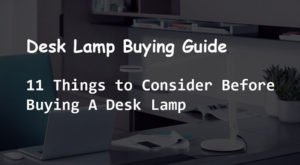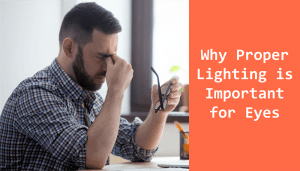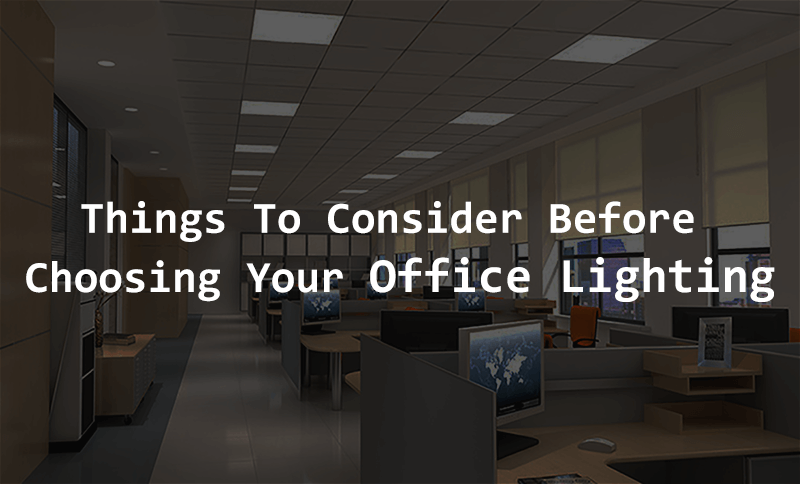
Things to Consider Before Choosing Your Office Lighting

Did you know that Apple Inc, the giant technology company founded by Steve Jobs, has strict lighting requirements for the offices that they lease? In fact, landlords who want a contract with Apple must often renovate their buildings and create larger windows to meet these requirements.
Apple does this because they understand something important: lighting affects employee productivity and well-being. But you don’t need to be as obsessive as Tim Cook to benefit from good lighting.
In this post, we will explain the most important concepts related to office lighting. If you read and apply these basic concepts, you will be able to improve your office lighting so that your employees will be happier and healthier.
We will explain how light impacts your employees and what your options are. We’ll also explain some important technical details that will allow you to make an informed decision when shopping for office lights.
Let’s Compare Two Different Offices
Although scientists have confirmed this common-sense idea; you do not need scientific studies to prove that lighting is essential to employee well-being. Rather, let’s perform a thought experiment by comparing two different offices.
Office 1 is in a dimly basement with no windows. The fluorescent lights flicker unpredictably, and the employees must strain their eyes to see their computer screens. They have no access to natural sunlight, and many employees complain of blurry vision and dry eyes at the end of the day.
Office 2, on the other hand, is in a large open-plan space on the 5th floor. It has enormous windows so that employees get lots of sunlight, and the managers have installed advanced ceiling lights and desk lamps at every workstation. The employees all agree that it is a beautiful office.
Now, let me ask you a question. Which office will have more productive employees? Which office will employees prefer? The answer is obvious.
Importance of good lighting in offices
Good lighting plays an important role for the efficiency of your employees. It can create a comfortable and stimulating working environment for your employees. It will keep them strong both physically and mentally throughout the day.
How Office Lighting Affects Our Productivity
Light affects the circadian rhythms that control our body’s temperature, sleep cycle, and even its hormonal secretions. Many business owners don’t realize that their office lighting could be affecting their employees’ hormones!
When they arrive at work in the morning, your staff are refreshed and ready to begin the day. Good lighting complements and inspires this mood in workers. It also mimics natural sunlight, making your employees feel awake and alert.
Bad lighting, however, has the opposite effect. It will create fatigue and demotivation as soon as they arrive at the office. It will make employees dislike their work environment. It will create bad memories that they will never forget.
The saddest part? Many business owners have no idea how important good office lighting is!
How Office Lighting Affects Our Physical and Psychological Health
But lighting influences more than productivity; it even impacts our health.
Bad lighting causes eye strain. Employees will go home with dry eyes that hurt. Since painful eyes cause emotional distress, so can you see how bad lighting will hurt your workforce? Nobody wants to hurt their staff’s eyes.
In addition, lots of people have “migraine brain”. In other words, they are susceptible to headaches and migraines. Bad lighting will trigger their symptoms so that they experience not only eye strain but also painful migraines at the end of the workday.
Good lighting, on the other hand, improves the entire aesthetic of the office space. A beautiful office inspires and motivates the employees. It makes them happier and creates good memories. It even improves creativity.
So, now you understand the vital importance of good lighting. Let us dig deeper into the details.
What kind of lights are used in offices?
If you research lighting, you will come across a lot of scientific jargon. Most of it is unhelpful for the entrepreneur who is simply looking for office lights! All you need to know is that there are two main types of office lighting, ambient and task specific.
In most offices, a combination of ambient lighting and task specific lighting is used. The ambient lighting creates a stable and clear light source for all the employees, while task specific lighting is used to supplement the ambient lighting when employees need additional light for a specific reason.
Ambient lighting
Ambient lighting (also known as general lighting) is the lighting that you use to illuminate the entire office space. The goal of ambient lighting is to provide a stable source of light to every part of the room.
If you have good ambient lighting, employees will be able to navigate the room effortlessly, without straining their eyes to see any object in their path.
Task Specific lighting
On the other hand, task lighting is used to illuminate a specific area of a workplace so that a task can be performed more effectively. The best example of task specific lights are the strong surgical lights used by doctors and dentists.
Imagine undergoing a surgery without adequate lighting! A neurosurgeon couldn’t operate on a person’s brain without a perfectly clear light source. And while this is an extreme example, the concept applies to normal office workers too. Task specific lighting can help staff to read and write more effectively.
What type of lighting is best for offices?
Types of Light Fixtures Best for Ambient Light
For ambient lighting, the most common light fixture is the ceiling light. Ceiling lights themselves come in a variety of forms. You can choose between panels, recessed lights, suspended ceiling lights, and more. The best way to understand these different fixtures is to look at pictures of them.
Panel Lights
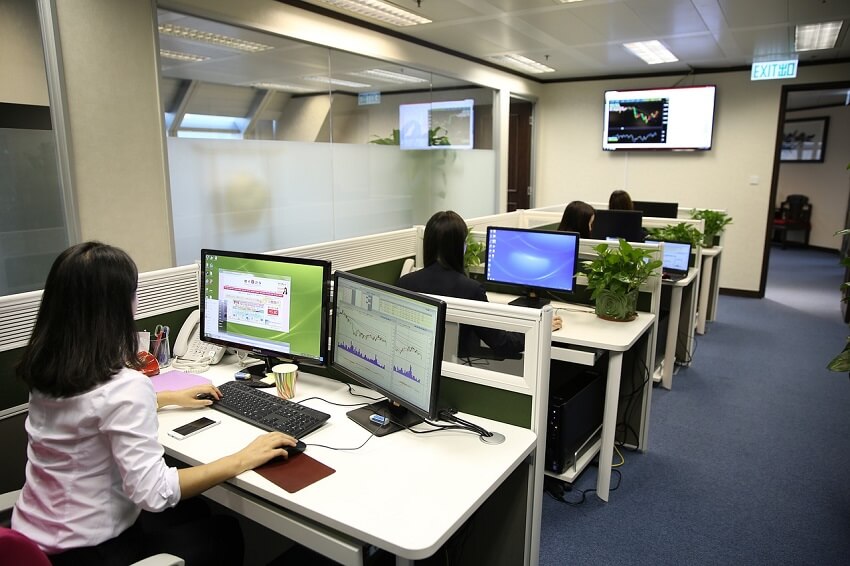
This is an example of panel lights. They are called panels because of their rectangular shape. They’re common in call centers and small offices.
Recessed Lights
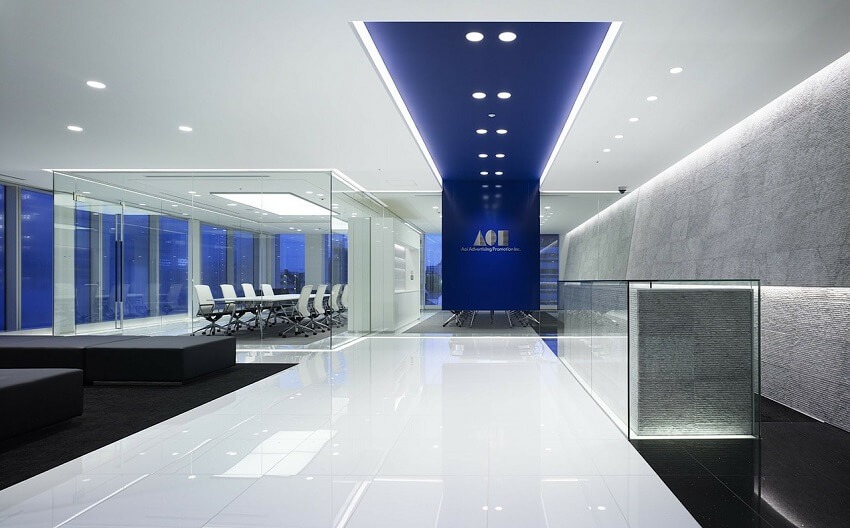
Notice the small circular lights in the ceiling? Those are called recessed lights. They’re common in upscale office blocks and shopping malls.
Suspended Ceiling lights
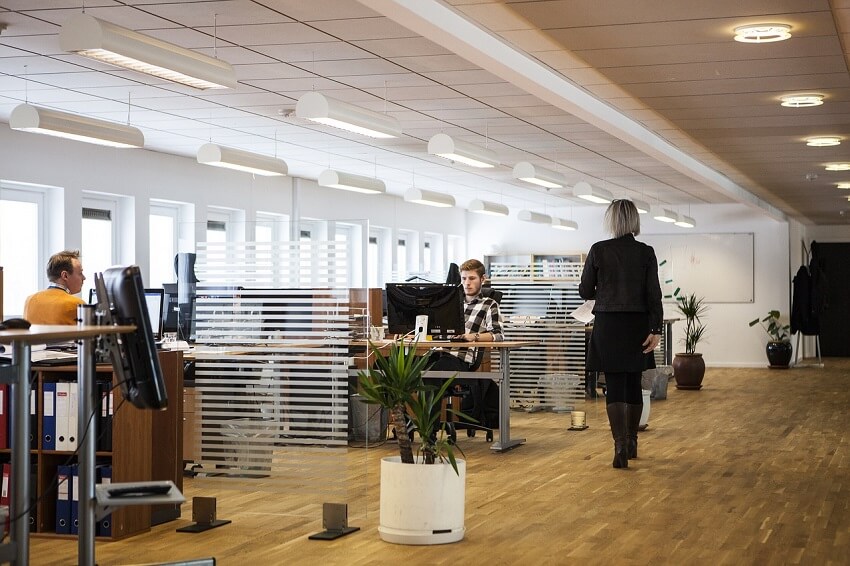
Suspended lights are attached to the ceiling and suspended using chords. They hang closer to the employees.
All three of these fixtures can produce good ambient lighting. Your choice will be based on aesthetics more than anything else. Choose the fixture that works best with your office decor.
Types of Light Fixtures Best for Task Specific Light
The most common type of task specific light is the desk lamp. When choosing the desk lamps for your office, it’s important to make sure that the intensity of their light is variable.
In other words, employees should be able to adjust their lamps according to their personal preferences. This allows light-sensitive staff to dim their lamps if they need to.
Other than choosing adjustable desk lamps, your office’s aesthetics should influence your decision. Make sure to choose a style of lamp that matches the office’s interior design.
Fluorescent VS LED Light Bulbs
We have spoken about light fixtures, but we still need to mention light bulbs. You must decide whether to use fluorescent light bulbs or LED ones. Here are the pros and cons of both.
LED lights cost more initially, but they last longer, so they are actually cheaper in the long run. They also provide superior ambient lighting to fluorescent bulbs. However, LED bulbs emit small but significant amounts of UV rays that can cause eye disease with frequent exposure. In addition, looking directly into an LED bulb can cause irreparable eye damage.
Fluorescent bulbs are cheaper in the store, but they have a shorter lifespan than LED bulbs. They are safer than LED bulbs (you can look directly into a fluorescent bulb without danger). But they do trigger migraines in sensitive people, and they are harder to adjust than LED bulbs.
At the end of the day, you must weigh the pros and cons. If in doubt, use fluorescent bulbs as they’re safer.
What about Brightness? Can office Lights be Too Bright?
Since you want to illuminate your office, bright lights are a good thing, right? Not necessarily. Although it might sound counterintuitive, let me explain.
If the lights are too bright, computer screens in the office will reflect a glare. This glare irritates and strains the eyes; in fact, it is as unhealthy as dim lights. We’ve all experienced glare on our screens before. If you’ve ever tried to use your phone outdoors on a sunny day, you’ll know what I’m talking about.
The recommended number of lumens for office lighting is between 300 and 500. When you’re choosing your light bulbs, keep those numbers in mind. Anything above 500 lumens will create an unbearable glare.
How Color Temperature Will Affect Your Office Lighting
Now, I promised to avoid too much scientific jargon, but this is an important concept to understand. Every light source comes with a color temperature, which is measured in Kelvins (K). The color temperature spectrum (for office lighting) goes from 3000K to 6000K.
3000K – 5000K is a warm, yellow color temperature. Whereas 5000K-6000k is a cool, blue color temperature. But what does this mean in practical terms?
The important thing to understand is that warm, yellow color temperature will make your employees relax. This is the reason why interior designers recommend warm colors in bedrooms. This color temperature will make you want to kick off your shoes, relax, and maybe even go to sleep.
A cool, blue color temperature, on the other hand, mimics natural daylight. This will make workers alert, awake, and energetic. Therefore, in offices, it’s best to use a cool, blue color temperature between 4500K and 6000K.
If your lights are adjustable, you can use warmer, yellow lights in the late afternoon so that your employees finish the workday in a relaxed state of mind.
Common Mistakes People Make When Choosing Office Lighting
You almost have enough information to purchase the perfect office lights for your workspace. But before you do, make sure that you avoid these 5 common mistakes.
Putting the ambient lighting directly over a workstation
If the overhead light is directly on top of an employee, this will increase the chances of creating a glare and therefore straining your worker’s eyes. It’s better to angle their desks such that the lights aren’t directly overhead.
Not making use of daylight
It’s incredible how far our lighting solutions have come. Good lighting can now mimic real sunlight. But that does not mean you should neglect the sun; in fact, nothing can beat the sun.
So, if you have windows, make sure that you open the curtains to let the sunlight in. Place employees in positions where they can receive some sunlight (not too much however).
Not Giving Employees Any Control over Their Lighting
Whenever possible, purchase adjustable lights so that employees can change the settings if they feel bothered. When buying task lights such as desk lamps, workers should be able to adjust the intensity of the light.
Adjustable ambient lighting is also available, and employees can vary the intensity of the light based on the needs of the day. For example, dark, gloomy weather will require brighter lights than a hot summer’s day. Adjustable lights account for this variation.
Using the Wrong Color Temperature
If you use a warm, yellow color temperature at the beginning of the day, don’t expect your workforce to be productive. They’ll feel lazy, sleepy, and overly relaxed.
Rather, make sure that the color temperature emitted by your lighting is appropriate for the time of day. Bluer, cooler color temperatures are almost always better at the office.
Buying Fluorescent Light to Cut Costs
If you browse online, you’ll notice that fluorescent lights are cheaper than LED lights. But here’s the thing: the bulbs have different lifespans. A fluorescent light bulb lasts for about two years. LED lights last 10 – 20 years or more. So, in the long-run, LED lights save money, although they cost more in the store.
Final verdict
Now you understand why lighting is an obsession for Apple Inc. It affects not only employee productivity but also their physical and mental health.
For the benefit of your staff, you should use a combination of ambient and task specific lighting. And employees should be able to adjust the levels of light if necessary.
In addition, using cool, blue light of 5000k – 6000k will help your employees to remain focused and happy.
Finally, whenever possible, you should maximize your staff’s exposure to natural sunlight because there is no substitute for the real thing.
At the end of the day, the most important thing is to protect your staff’s health and wellbeing, and that’s where good lighting plays a vital role.
